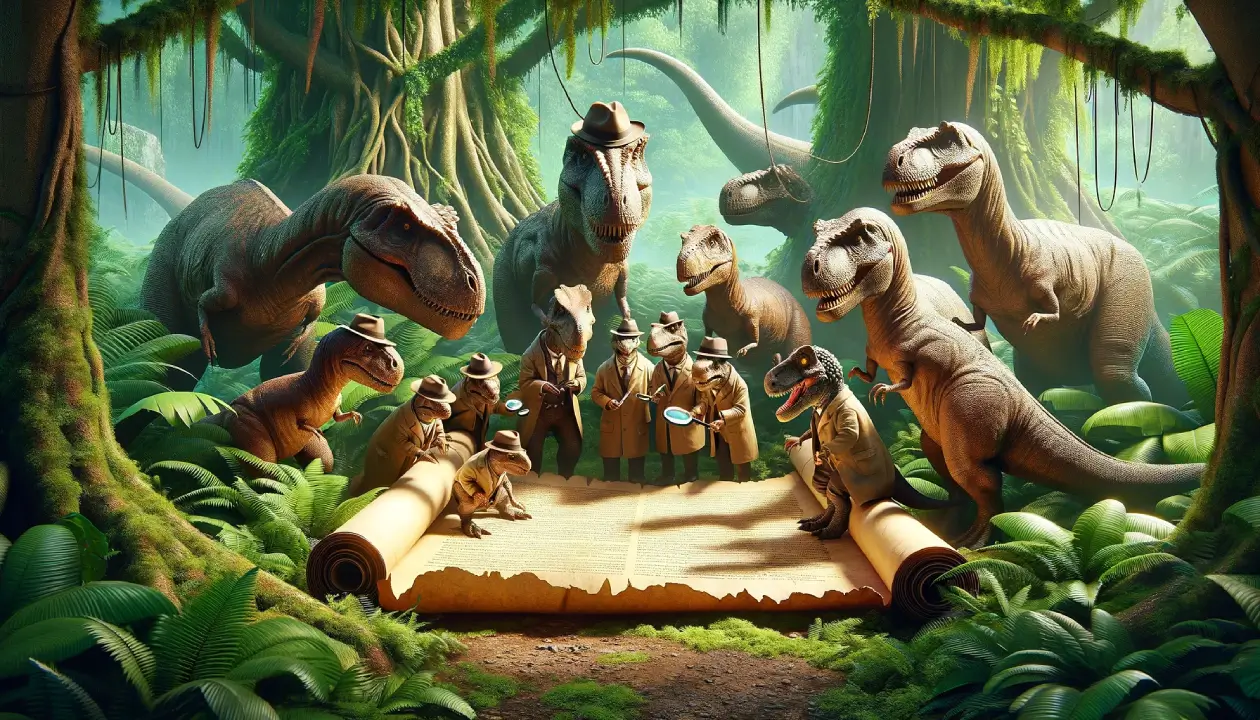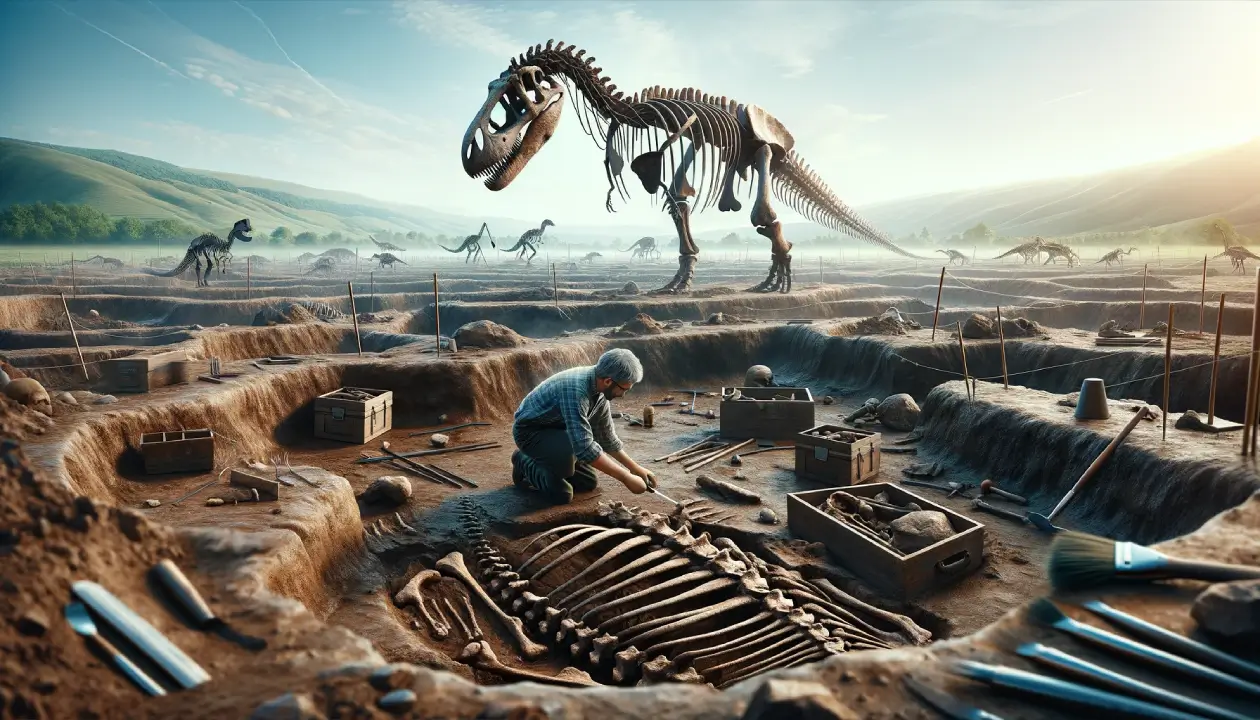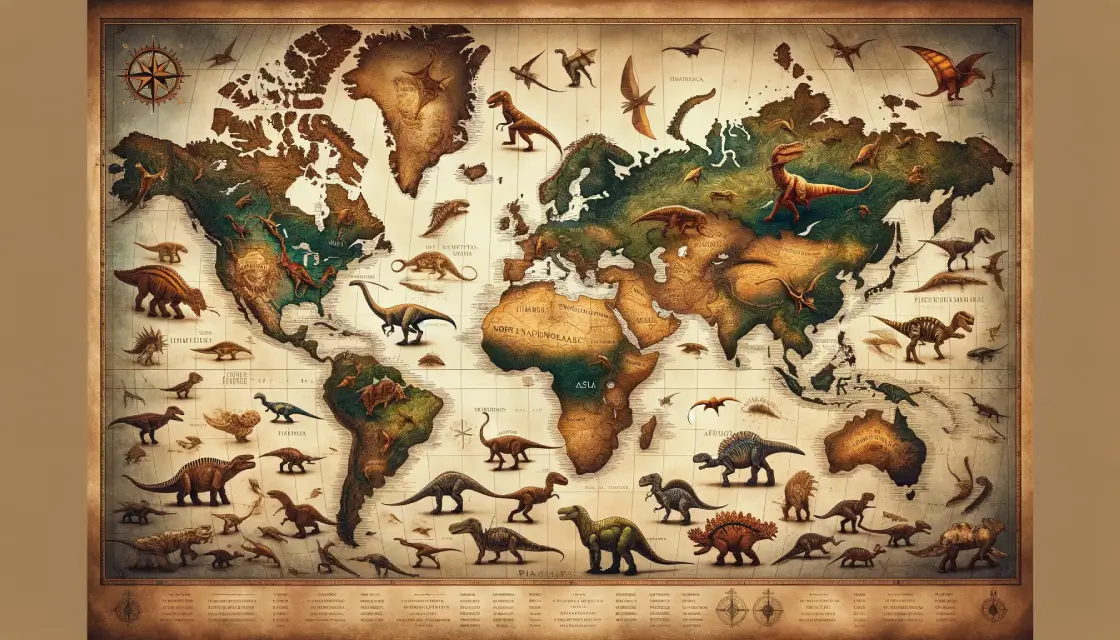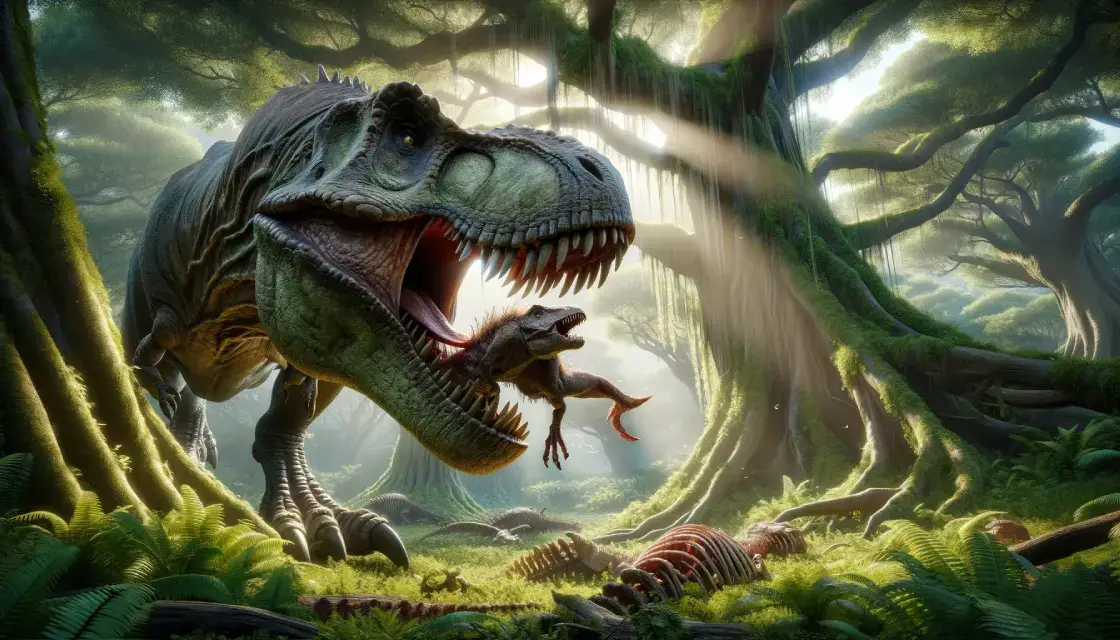The extinction of the dinosaurs is one of the greatest mysteries in the history of life on Earth. For many years, scientists have been trying to uncover what happened to the dinosaurs and why these majestic creatures disappeared from the planet after ruling for over 150 million years. This question – “what happened to the dinosaurs?” – has fascinated both experts and laypeople alike. Understanding the fate of the dinosaurs provides insights into mass extinction events, ecosystem recovery, and evolutionary processes.
In this article, we’ll explore the leading theories and evidence surrounding the extinction of the dinosaurs approximately 65 million years ago. We’ll also discuss how ideas about their disappearance have evolved over time as new discoveries came to light. Uncovering what happened to the dinosaurs sheds light on a pivotal moment in the evolution of life on Earth.
| Key Takeaways | Details |
|---|---|
| Asteroid impact likely triggered extinction | The leading theory is that a massive asteroid collision caused catastrophic climate changes inhospitable to dinosaur survival |
| Volcanic activity was a contributing factor | Intense volcanic emissions may have stressed ecosystems and primed Earth for collapse prior to the asteroid impact |
| Dinosaurs disappeared abruptly | The fossil record provides evidence of a sudden mass extinction event rather than gradual decline |
| Mammals radiated in extinction’s wake | With ecological niches opened up, mammals rapidly diversified and rose to dominance after the disappearance of dinosaurs |
| Extinction reshaped evolution | The mass extinction cleared space for new evolutionary trajectories and biodiversity recovery over millions of years |
Short Answer
The extinction of the dinosaurs was most likely caused by a massive asteroid or comet impact, coupled with intense volcanic activity. The collision triggered catastrophic climate changes, which dealt a devastating blow to the dinosaurs and many other species.
Theories Through Time
Ideas about what led to the demise of the dinosaurs have changed dramatically as scientific understanding has advanced over the past centuries.
- In the 1800s, it was initially thought that dinosaurs gradually declined due to climate changes or diseases.
- In the early 1900s, the discovery of the Chicxulub impact crater in the Gulf of Mexico led scientists to propose that an asteroid impact played a role.
- More recent evidence, including the worldwide layer of iridium left by the impact, strengthened the impact theory.
- However, some scientists also cite massive volcanic eruptions in India for contributing to climate changes that affected dinosaurs.
| Year | Discovery | Significance |
|---|---|---|
| 1822 | First dinosaurs identified as distinct reptile group | Showed dinosaurs were a separate clade that later went extinct |
| Early 1900s | Chicxulub crater linked to extinction | Suggested impact event played a role in the extinction |
| 1980 | Iridium layer found at K-Pg boundary | Indicated a meteorite impact occurred at the time of extinction |
| 1991 | Chicxulub confirmed as impact crater | Strongly supported impact theory with a smoking gun crater |
| 2009 | Evidence of major volcanism in India | Suggested climate changes from volcanoes contributed to extinction |
Key discoveries that shaped theories include:
- 1822: First dinosaurs identified as a distinct group of reptiles
- Early 1900s: Chicxulub crater linked to extinction event
- 1980: Iridium layer found worldwide in the Cretaceous-Paleogene boundary
- 1991: Chicxulub crater confirmed as impact site via drilling
- 2009: Strong evidence found for volcanic activity in India at extinction time
The interplay between asteroid impact and climate changes from volcanoes is an active area of research. But the notion that a catastrophic extinction event rapidly eliminated dinosaurs is now well-supported. Scientists continue to uncover new pieces of evidence that reveal what happened to the dinosaurs.
| Time Period | Dominant Theory |
|---|---|
| 1800s | Gradual climate change or disease |
| Early 1900s | Asteroid impact |
| 1970s-present | Asteroid impact coupled with volcanism |
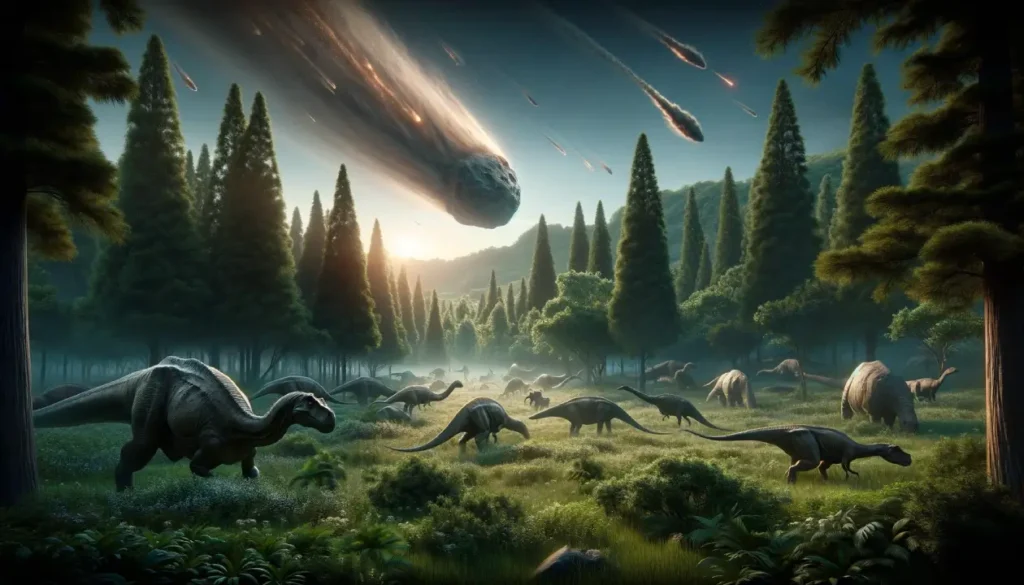
The Asteroid Impact Theory
The asteroid impact theory is currently the leading explanation for the extinction of the dinosaurs. According to this theory, an asteroid or comet collided with Earth around 66 million years ago, triggering catastrophic changes that wiped out the dinosaurs and 75% of plant and animal species.
There is substantial evidence that supports the role of a devastating impact in the Cretaceous-Paleogene (K-Pg) mass extinction:
- The Chicxulub crater located in the Yucatán Peninsula of Mexico dates back precisely to the time of extinction and is the right size and structure to have been caused by a massive impact.
- Iridium anomaly – Layers of sediment deposited at the K-Pg boundary contain abnormally high levels of iridium, an element rare on Earth but common in asteroids and other space bodies. This suggests extraterrestrial material mixed globally into the geologic record.
- Shocked quartz, tektites and other impact materials – These provide further proof that a huge impact occurred.
- Fossil record – Plant and animal species abruptly disappeared from the fossil record right after the impact, indicating a sudden mass extinction.
The colossal collision would have triggered deadly effects like:
- Tsunamis
- Earthquakes
- Wildfires
- A broiling atmosphere
- Long impact winter
These devastating conditions meant the dinosaurs could not survive. The asteroid impact theory currently provides the most comprehensive explanation for their abrupt extinction.
Volcanic Activity and Climate Change
While an asteroid impact likely delivered the final blow, some scientists propose that intense volcanic activity may have also played an important supporting role in the mass extinction of life at the end of the Cretaceous Period.
Key evidence includes:
- Deccan Traps – This volcanic region in India pumped massive amounts of sulfur and carbon dioxide into the atmosphere for tens of thousands of years preceding the extinction event.
- Greenhouse gases – Emissions may have led to global warming and other climate changes inhospitable to many species.
- Marine fossil record – Variations prior to the K-Pg extinction suggest ecological stresses were already occurring.
- Climate models – Indicate pre-impact volcanism could have stressed ecosystems, priming Earth for collapse when the asteroid struck.
So while the asteroid impact seems to have been the final blow, large-scale volcanism may have softened up dinosaur-dominated ecosystems and made recovery more difficult after the collision’s aftermath. Climate shifts from both volcanoes and the impact likely acted together to wipe out 76% of life on Earth.
The Aftermath of Extinction
The extinction of the dinosaurs had monumental ecological and evolutionary impacts on life on Earth. Here are some of the significant consequences:
Major ecosystem impacts:
- Mammals expand into new niches and undergo rapid diversification
- Flying and marine reptiles perish
- Amphibians, birds, and bony fish survive
Evolutionary changes:
- Mass extinction alters evolutionary trajectories
- Survivors undergo adaptations and radiations
- Biodiversity plummets then recovers over millions of years
Table summarizing key details:
| Category | Details |
|---|---|
| Mammals | Radiate and diversify after extinction |
| Birds | Survive as dinosaur descendants, undergo radiations |
| Reptiles | Snakes and lizards expand into dinosaur niches |
| Plants | Flowering plants rise with more niches available |
In summary, the asteroid impact cleared ecological space, driving new evolutionary paths for survivors. Mammals and other groups filled niches left vacant by dinosaurs. The mass extinction completely reshaped global ecosystems and life on Earth.
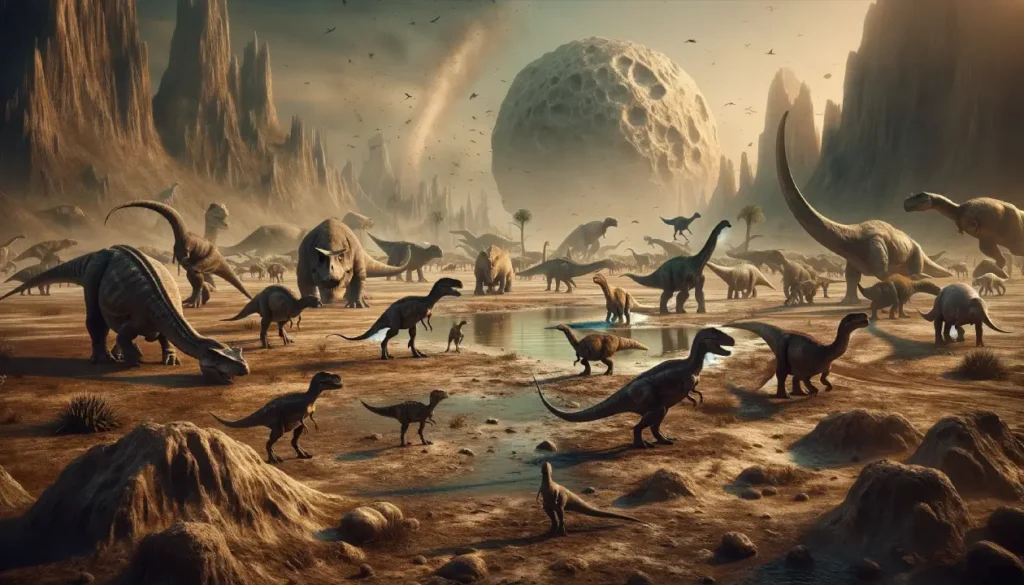
Debunking Myths
Many myths and misconceptions persist around the extinction of the dinosaurs. Here are some common ones debunked by scientific evidence:
| Myth | Fact |
|---|---|
| Dinosaurs were already declining due to climate changes or disease. | Fossil evidence shows dinosaurs were diverse and thriving right up to the impact event. |
| All dinosaurs went extinct. | Some dinosaurs survived and evolved into modern birds. |
| Mammals immediately replaced dinosaurs. | Mammals coexisted with dinosaurs but only radiated later after niches opened up. |
| The impact directly killed off all the dinosaurs. | While many dinosaurs died in the initial collision, more gradually went extinct due to the aftermath over weeks to years. |
| An impact was the only cause of extinction. | Volcanic activity and climate changes likely contributed as well. |
| Dinosaurs could have survived the asteroid. | The global catastrophe was beyond what any species could adapt to. |
In reality, the extinction was abrupt after an asteroid collision, with climate shifts and volcanic activity as contributors. Mammals and other survivors radiated in the wake of the dinosaurs’ disappearance. Understanding the true chain of events helps unravel this crucial chapter in Earth’s history.
Interesting Facts
Here are some intriguing facts related to the extinction of the dinosaurs:
- The Chicxulub asteroid was estimated to be 10-15 kilometers wide, making the impact equal to more than a billion Hiroshima atomic bombs.
- The collision carved out a crater 180 kilometers wide and launched debris over 10,000 kilometers.
- Tsunamis upwards of 100 meters high swept the world’s oceans in the aftermath.
- A fiery heat pulse incinerated anything within 900 km of the impact zone.
- It took centuries to millennia for ecosystems to recover from the mass extinction event.
- Birds and crocodilians are the only living dinosaur descendants today.
- Dinosaur fossils have been found on every continent, including Antarctica.
- If not for their extinction, intelligent dinosaurs might have evolved on Earth.
- An asteroid strike of this magnitude would likely still cause a mass extinction today.
Conclusion
The extinction of the dinosaurs at the end of the Cretaceous Period stands out as one of the most pivotal events in Earth’s history. While scientists debate whether an asteroid impact, volcanic activity, climate change, or a combination delivered the final blow, it’s clear these factors conspired to drive the abrupt disappearance of dinosaurs and many other species approximately 65 million years ago.
The mass extinction reshuffled global ecosystems and evolutionary trajectories, leading to the rise of mammals and clearing ecological space for new speciation of surviving groups like birds. Understanding what happened to the dinosaurs sheds light on the resilience of life on Earth to catastrophic changes – extinction events are also opportunities for new beginnings and diversification. Uncovering the unfolding narrative of dinosaur extinction continues to reveal insights about our planet and the intricate interplay between geological and biological forces over deep time.

